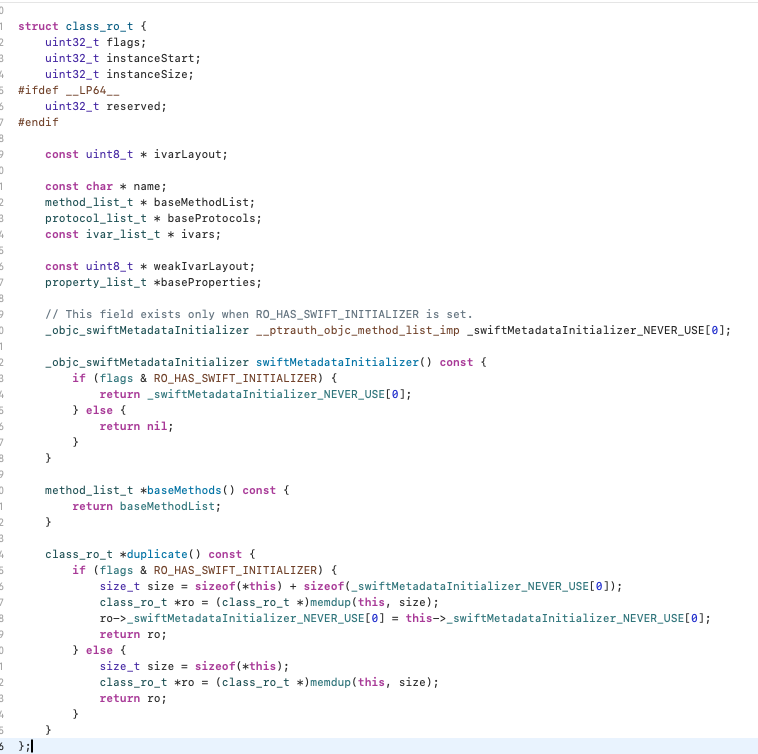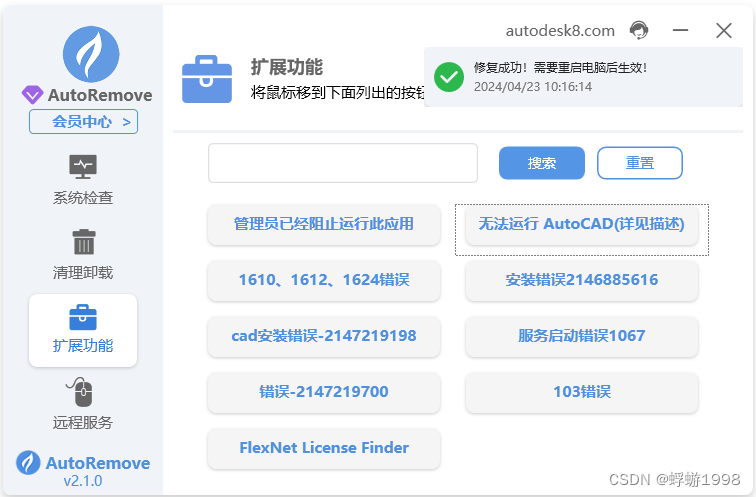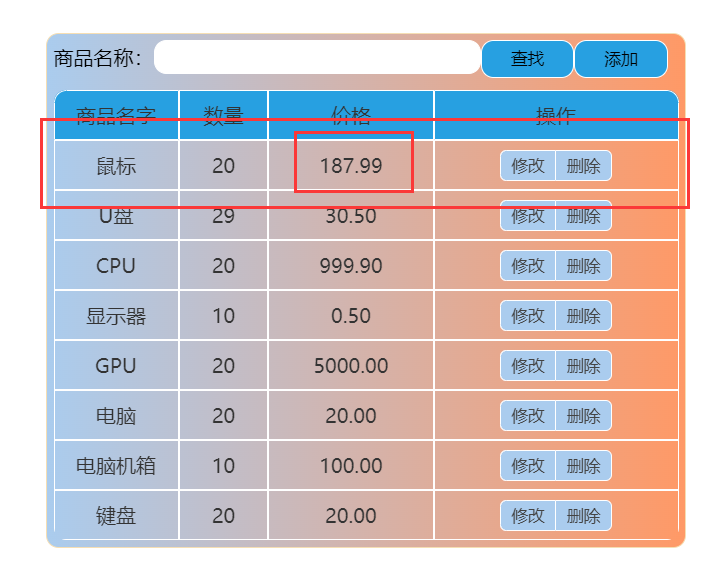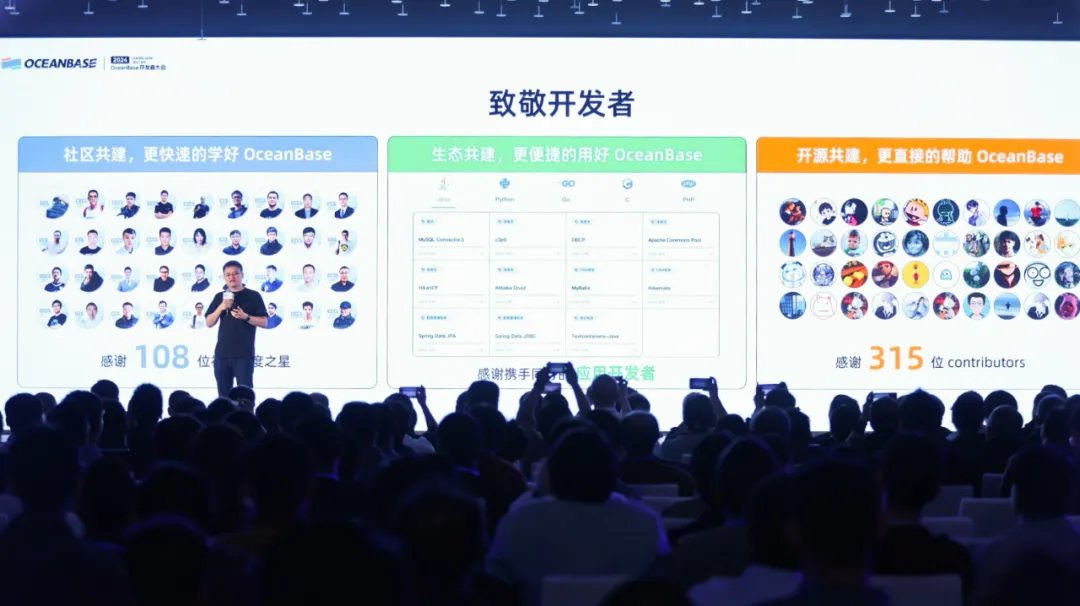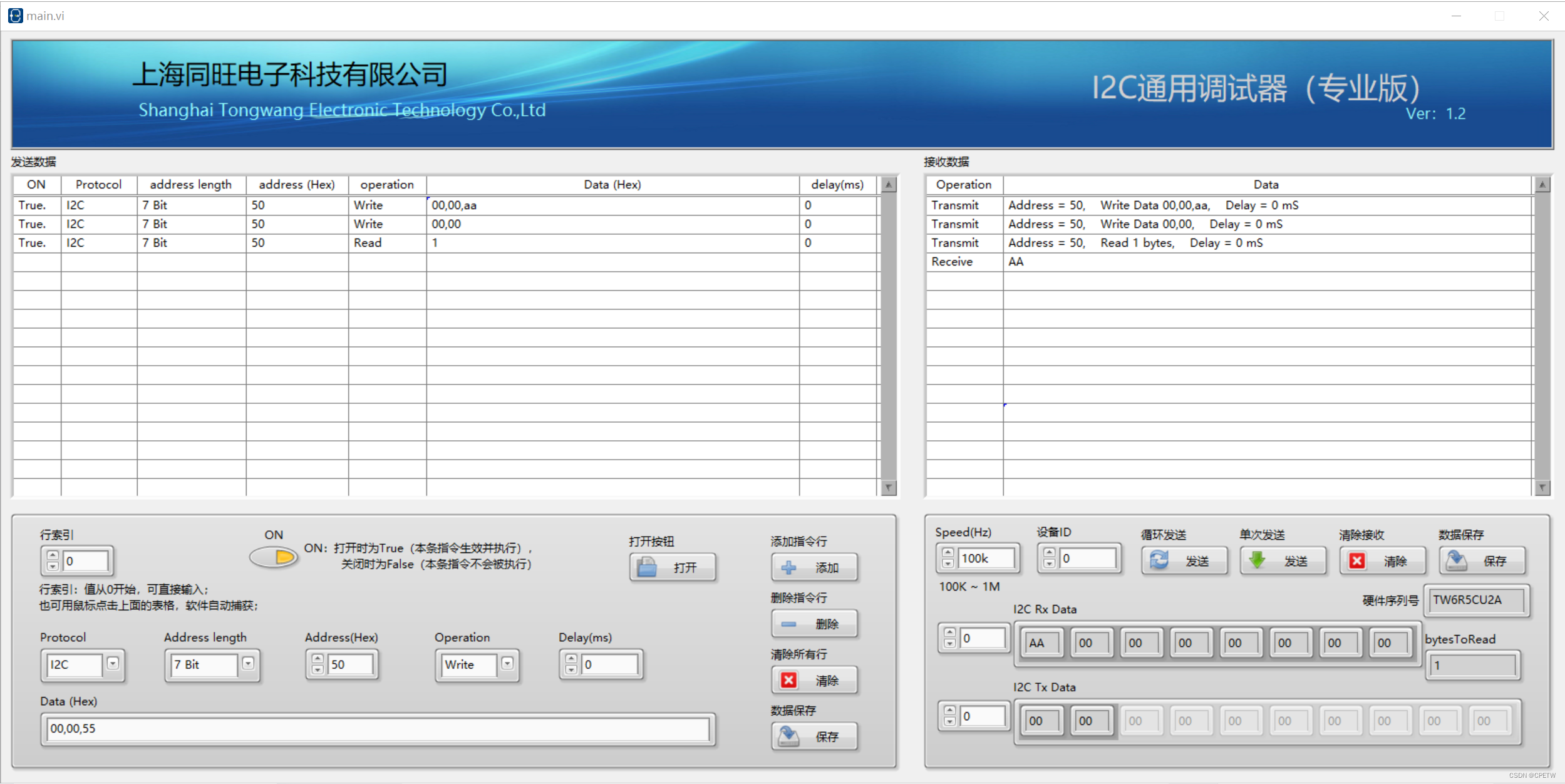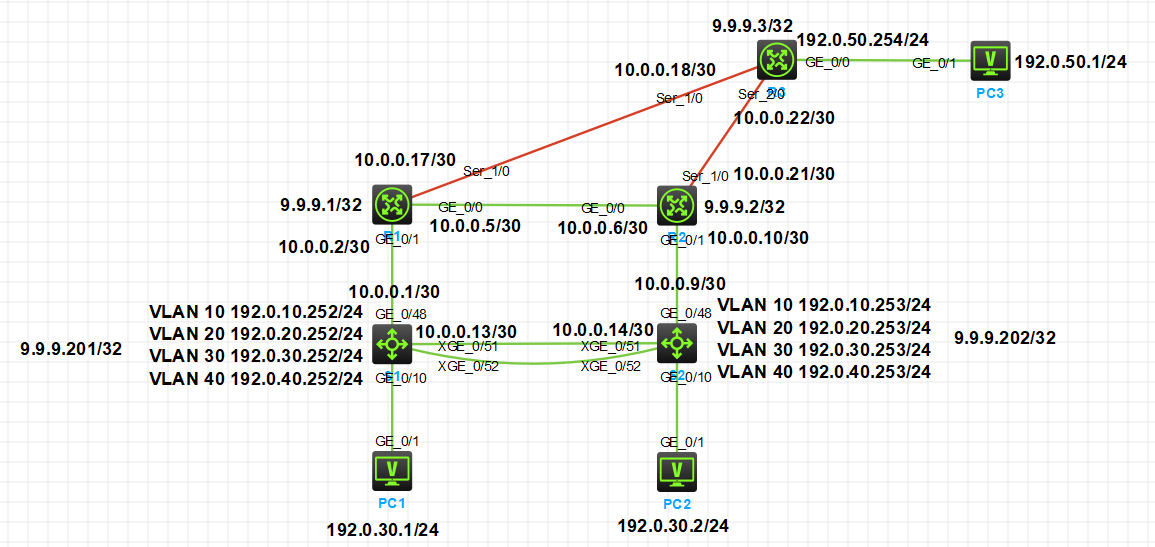本教程原文链接:截断堆积柱状图绘制教程
欢迎大家转载!!!!
本期教程

写在前面
堆积柱状图是柱状图的常见类型之一,也是平时使用概率较高的图形之一。我们前期发布了很多个柱状图的绘制教程,若你刚兴趣可以自行查看。堆积柱状图,最近也发布了一个相对详细的教程,基于R语言 | 绘制个性化堆积柱状图。
对于截断图的绘制,也是相对比较简单,因为我们柱状图和堆积柱状图都是基于ggplot2绘制。因此,基本全部的代码都是可以通用。我们次教程,也是基于前期的教程进行修改即可。
截断堆积柱状图绘制
导入所需的R包和数据
library(ggplot2)
library(cowplot)
library(dplyr)
library(tidyr)
library(ggbreak)
library(ggsignif)
library(ggpubr)
library(EnvStats)
library(stats)
导入数据
请结合自己的数据进行导入!!!
我们这里需要长数据,需要将宽数据转换成长数据。
data_df <- gather(data, key = "Group", value = "Value", -Category)
data_df

绘制基础图形
# 绘制柱状堆积图
ggplot(data_df, aes(Category, y = Value , fill = Group))+
#geom_bar(stat = "identity", position = "fill")+
geom_bar(stat = "identity", position = "stack")+
scale_y_continuous(expand = c(0, 0),
labels = scales::number_format(accuracy = 1) ## 设置Y轴保留一位小数点
)+
scale_x_discrete(expand = c(0,0.5))
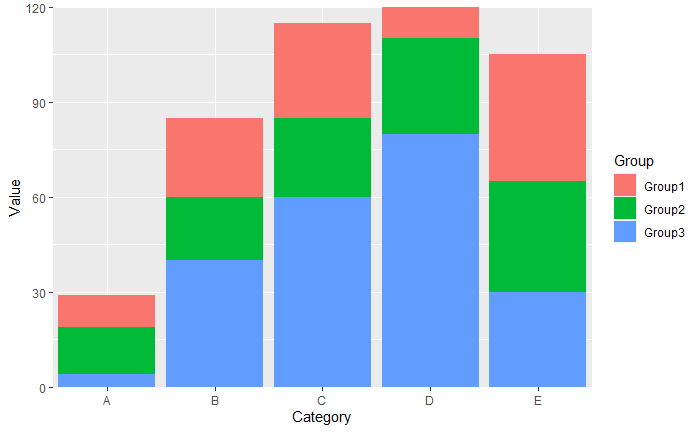
我们可以自行先设置主题,以便于后期的图形绘制。
mytheme01 <- theme_classic()+
theme(axis.line = element_line(size = 1), ## 粗细
text=element_text(family = "sans",colour ="black",size = 12),
axis.text.x = element_text(color = "black", size = 12),
axis.text.y = element_text(color = "black",size = 12),
axis.ticks = element_line(size = 0.6,colour = "black"),
axis.ticks.length = unit(1.5,units = "mm"),
#legend.position = "none",
strip.background = element_blank()
)
mytheme02 <- theme_classic() +
theme(
text = element_text(family = "sans", colour = "gray30", size = 12),
axis.line = element_line(size = 0.6, colour = "gray30"),
axis.ticks = element_line(size = 0.6, colour = "gray30"),
axis.ticks.length = unit(1.5, units = "mm"),
plot.margin = unit(c(1, 1, 1, 1), units = "inches")
)
图形修改和截断设置
ggplot(data_df, aes(Category, y = Value , fill = Group))+
#geom_bar(stat = "identity", position = "fill")+
geom_bar(stat = "identity", position = "stack")+
scale_y_continuous(expand = c(0, 0),
labels = scales::number_format(accuracy = 1) ## 设置Y轴保留一位小数点
)+
scale_x_discrete(expand = c(0,0.5))+
scale_y_break(c(33,70),
scales = "free", #'fixed', 'free'
)+
## 设置颜色
scale_fill_manual(values = c("#386cb0", "#fdc086", "#1b9e77","#a6cee3","#bebada","#e5c494"))+
labs(x = "Season", y = "Percentage", fill = NULL) +
theme_classic()
堆积柱状图柱子参数修改
p1 <- ggplot(data_df, aes(Category, y = Value , fill = Group))+
#geom_bar(stat = "identity", position = "fill")+
geom_bar(stat = "identity",
position = "stack",
color = "black", ## 柱边颜色
width = 0.5, ## 柱子宽度
size = 1.0 ## 粗细
)+
scale_y_continuous(expand = c(0, 0),
labels = scales::number_format(accuracy = 1) ## 设置Y轴保留一位小数点
)+
scale_x_discrete(expand = c(0,0.5))+
scale_y_break(c(33,70),
scales = "free", #'fixed', 'free'
expand = c(0, 0),
## 修改坐标轴
ticklabels = c(70,90,110,120),
space = 0.25
)+
## 设置颜色
scale_fill_manual(values = c("#386cb0", "#fdc086", "#1b9e77","#a6cee3","#bebada","#e5c494"))+
labs(x = NULL, y = "Number of DEGs", fill = NULL) +
theme_classic()
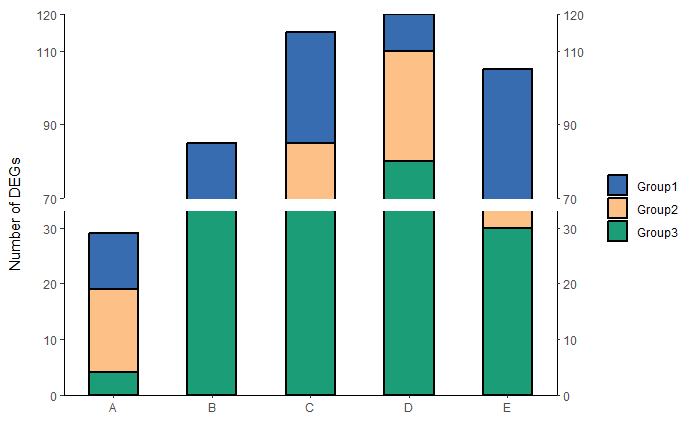
设置主题参数
p1 +
## 设置颜色
scale_fill_manual(values = c("#386cb0", "#fdc086", "#1b9e77","#a6cee3","#bebada","#e5c494"))+
labs(x = NULL, y = "Number of DEGs", fill = NULL) +
# 设置主题
theme_classic()+
theme(axis.line = element_line(size = 1), ## 粗细
text=element_text(family = "sans",colour ="black",size = 12),
axis.text.x = element_text(color = "black", size = 12),
axis.text.y = element_text(color = "black",size = 12),
axis.ticks = element_line(size = 1,colour = "black"),
axis.ticks.length = unit(1.5,units = "mm"),
legend.position = "none",
strip.background = element_blank()
)

添加不同的截断位置
ggplot(data_df, aes(Category, y = Value , fill = Group))+
#geom_bar(stat = "identity", position = "fill")+
geom_bar(stat = "identity",
position = "stack",
color = "black", ## 柱边颜色
width = 0.5, ## 柱子宽度
size = 1.0 ## 粗细
)+
scale_y_continuous(expand = c(0, 0),
labels = scales::number_format(accuracy = 1) ## 设置Y轴保留一位小数点
)+
scale_x_discrete(expand = c(0,0.5))+
##'@第一个截断位置
scale_y_break(c(5,20),
scales = "free",
ticklabels = c(20,25,30))+
##'@第二个截断位置
scale_y_break(c(30,70),
scales = "free", #'fixed', 'free'
# ## 修改坐标轴
ticklabels = c(70,90,110,120),
space = 0.25,
expand = c(0, 0))+
##'@第三个截断位置
# scale_y_break(c(90,105),
# scales = "free",
# expand = c(0, 0))+
## 设置颜色
scale_fill_manual(values = c("#386cb0", "#fdc086", "#1b9e77","#a6cee3","#bebada","#e5c494"))+
labs(x = NULL, y = "Number of DEGs", fill = NULL) +
# 设置主题
theme_classic()+
theme(axis.line = element_line(size = 1), ## 粗细
text=element_text(family = "sans",colour ="black",size = 12),
axis.text.x = element_text(color = "black", size = 12),
axis.text.y = element_text(color = "black",size = 12),
axis.ticks = element_line(size = 1,colour = "black"),
axis.ticks.length = unit(1.5,units = "mm"),
legend.position = "none",
strip.background = element_blank()
)
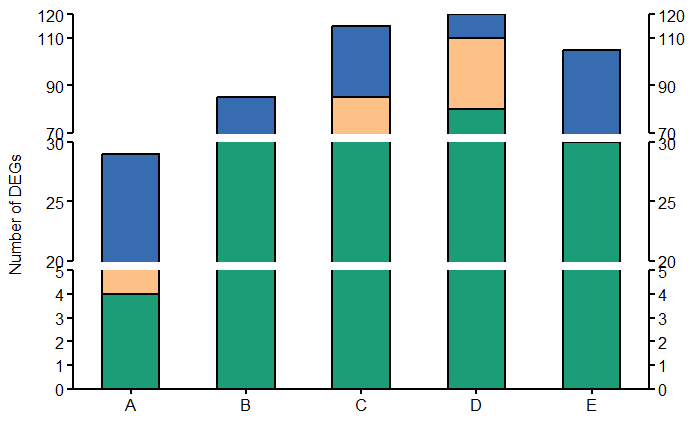
百分比堆积柱状图进行截断设置
ggplot(data_df, aes(Category, y = Value , fill = Group))+
geom_bar(stat = "identity", position = "fill")+
scale_y_continuous(expand = c(0, 0),
labels = scales::number_format(accuracy = 0.1) ## 设置Y轴保留一位小数点
)+
scale_x_discrete(expand = c(0,0.5))+
##'@第一个截断位置
scale_y_break(c(0.3,0.5),
scales = "free",
ticklabels = c(0.5,0.8,1.0),
expand = c(0,0))+
scale_fill_manual(values = c("#386cb0", "#fdc086", "#1b9e77","#a6cee3","#bebada","#e5c494"))+
labs(x = NULL, y = "Number of DEGs", fill = NULL) +
# 设置主题
theme_classic()+
theme(axis.line = element_line(size = 1), ## 粗细
text=element_text(family = "sans",colour ="black",size = 12),
axis.text.x = element_text(color = "black", size = 12),
axis.text.y = element_text(color = "black",size = 12),
axis.ticks = element_line(size = 1,colour = "black"),
axis.ticks.length = unit(1.5,units = "mm"),
legend.position = "none",
strip.background = element_blank()
)
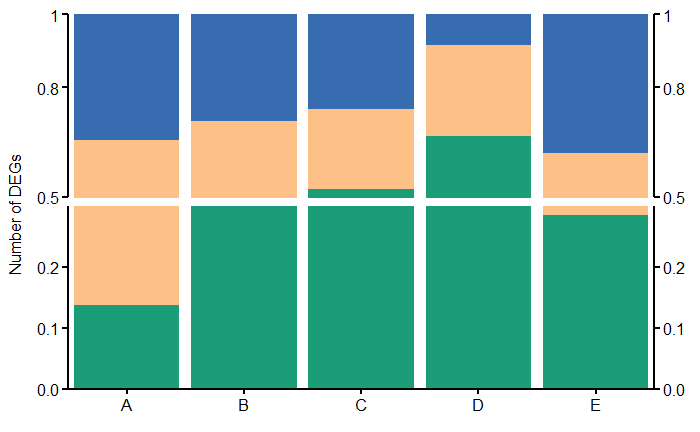
本教程原文链接:截断堆积柱状图绘制教程
欢迎大家转载!!!!
小杜的生信笔记,自2021年11月开始做的知识分享,主要内容是R语言绘图教程、转录组上游分析、转录组下游分析等内容。凡事在社群同学,可免费获得自2021年11月份至今全部教程,教程配备事例数据和相关代码,我们会持续更新中。
往期教程部分内容











往期部分文章
1. 复现SCI文章系列专栏
2. 《生信知识库订阅须知》,同步更新,易于搜索与管理。
3. 最全WGCNA教程(替换数据即可出全部结果与图形)
-
WGCNA分析 | 全流程分析代码 | 代码一
-
WGCNA分析 | 全流程分析代码 | 代码二
-
WGCNA分析 | 全流程代码分享 | 代码三
-
WGCNA分析 | 全流程分析代码 | 代码四
-
WGCNA分析 | 全流程分析代码 | 代码五(最新版本)
4. 精美图形绘制教程
- 精美图形绘制教程
5. 转录组分析教程
-
转录组上游分析教程[零基础]
-
一个转录组上游分析流程 | Hisat2-Stringtie
6. 转录组下游分析
-
批量做差异分析及图形绘制 | 基于DESeq2差异分析
-
GO和KEGG富集分析
-
单基因GSEA富集分析
-
全基因集GSEA富集分析
小杜的生信筆記 ,主要发表或收录生物信息学的教程,以及基于R的分析和可视化(包括数据分析,图形绘制等);分享感兴趣的文献和学习资料!!

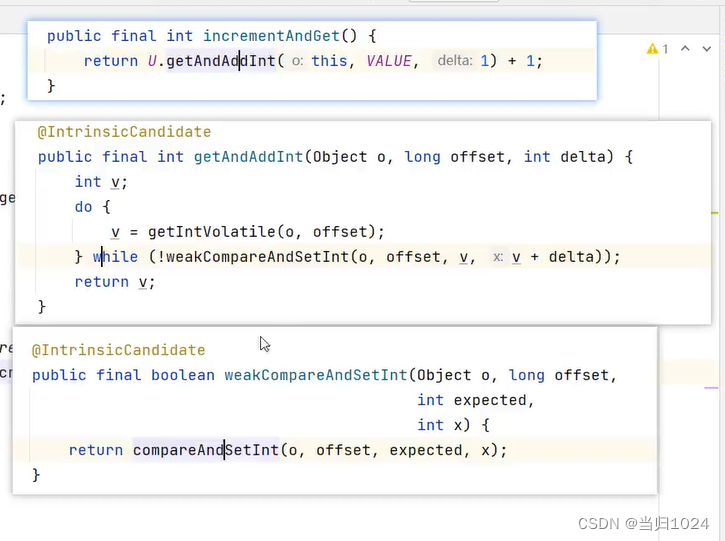
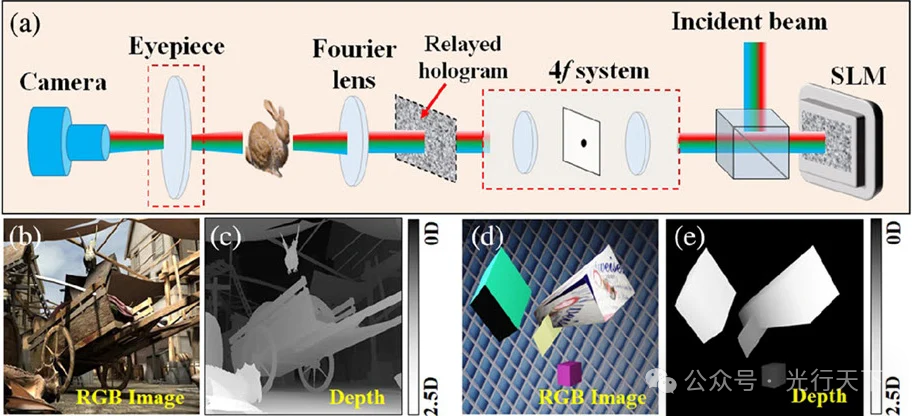

![[部分WP]DASCTF X GFCTF 2024 WEB](https://img-blog.csdnimg.cn/direct/c3f90eaa28e9444199bfedb65ce758de.png)




